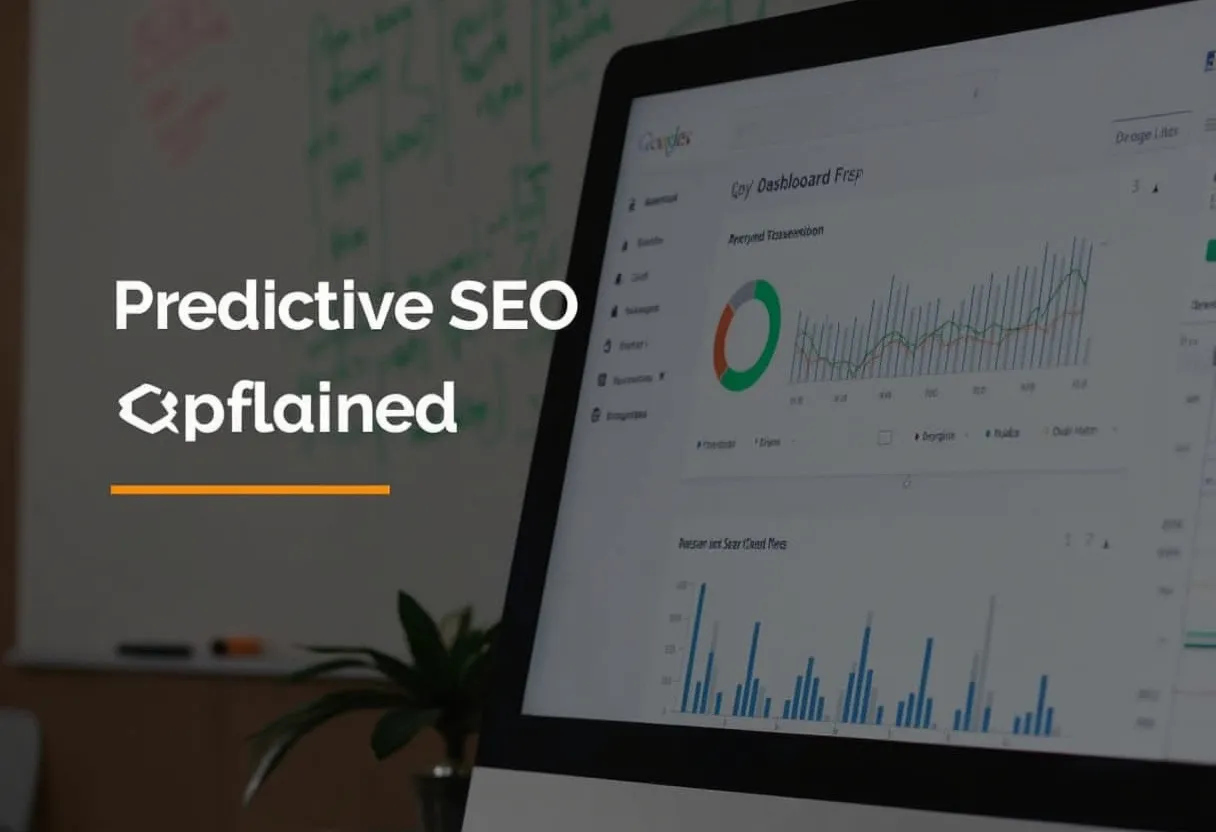Definition
What is Predictive SEO?
Predictive SEO involves using data analytics, machine learning, and historical data to forecast future search trends and user behavior. This approach allows businesses to anticipate and prepare for upcoming search terms and topics rather than reacting to existing trends. Predictive SEO helps in identifying potential keywords and content opportunities before they become popular, giving businesses a competitive edge in search engine rankings.
How It Works
Function and Concept:
Predictive SEO operates by analyzing various data points, including:
Historical Data:
Reviewing past search trends and user behavior to identify patterns and potential future trends.
Machine Learning and AI:
Utilizing explainable machine learning predictions to determine which optimizations will impact rankings. This involves analyzing large datasets to forecast user intent and algorithm changes.
Industry Trends and Events:
Considering current events, seasonal influences, and industry-specific trends to predict relevant search terms. For example, anticipating increased searches for aviator sunglasses following the release of a movie like “Top Gun: Maverick”.
User Search History and Behavior:
Leveraging predictive search features, such as autocomplete, to understand user intent and personalize search results.
Practical Use Cases:
Identifying Emerging Trends:
Predictive SEO helps businesses identify and capitalize on emerging trends before they become mainstream. This can include optimizing content for keywords that are expected to rise in popularity.
Proactive Content Creation:
By predicting future search terms, businesses can create relevant content ahead of time, positioning themselves as authorities on the subject and improving their chances of ranking highly when the terms become popular.
Adapting to Algorithm Changes:
Predictive SEO allows businesses to anticipate and prepare for upcoming algorithm updates, ensuring their content remains optimized and visible despite changes in search engine algorithms.
Why It Matters
Importance in SEO:
Competitive Advantage:
By anticipating future search trends, businesses can gain a significant competitive edge over their rivals. This proactive approach helps in securing top rankings before competitors react.
Improved Rankings and Organic Traffic:
Predictive SEO enhances the chances of improving search rankings by optimizing content for future search terms. This leads to increased organic traffic and better visibility.
User Experience and Retention:
Predictive search features, such as autocomplete, improve user experience by providing relevant suggestions, which can increase user retention and conversion rates.
Adapting to User Trends:
Predictive SEO helps businesses stay aligned with rapidly changing user trends, ensuring their content remains relevant and engaging.
Best Practices
Recommended Methods and Tools:
Conduct Thorough Keyword Research:
Start with a clear frame of reference by mapping out past successful search terms and identifying areas for improvement. Use tools like Google Trends to analyze keyword popularity over time.
Leverage Machine Learning and AI:
Utilize AI-powered tools to analyze large datasets and predict future trends. Tools like GetGenie.Ai can provide insights into trending keywords, competitor strategies, and content optimization suggestions.
Monitor Industry Trends and Events:
Keep an eye on current events, seasonal influences, and industry-specific trends to predict relevant search terms.
Optimize for User Experience:
Ensure that your content is optimized for user experience metrics such as page load speed and mobile responsiveness, as predicted by AI tools.
Balance Predictive SEO with Traditional SEO:
While predictive SEO is valuable, it should be used as a complement to traditional SEO practices. Ensure a smooth content workflow to quickly adapt to future trends.
Analyze Competitor Strategies:
Use tools to perform head-to-head comparisons with competitors and identify gaps in their strategy that you can capitalize on.
Tips for Implementation:
Start Small:
You don’t need a large SEO team to begin with predictive SEO. Begin with basic keyword research and gradually incorporate more advanced tools and strategies.
Focus on User Intent:
Use predictive search to understand the context behind user searches and ensure your content aligns with user intent.
Stay Updated:
Continuously update your strategies based on new data and trends to maintain a competitive edge.
By following these best practices and understanding the concept and importance of Predictive Analytics SEO, Predictive Search Analysis, Predictive SEO, AI-Generated Content Optimization, AI-Powered Content Analysis, Algorithmic Content Creation, Data-Driven Content Strategy, Search Volume Forecasting, SERP Volatility Tracking, Real-Time SEO Monitoring, businesses can significantly enhance their SEO strategies and stay ahead in the competitive online landscape.
Conclusion
Predictive SEO leverages data analytics and AI to anticipate future search trends and user behavior, providing businesses with a proactive approach to remain ahead of their competitors. By identifying emerging trends, optimizing for future search terms, and adapting quickly to algorithm changes, businesses can improve their search rankings, increase organic traffic, and enhance user experience. Implementing predictive SEO requires careful planning, constant monitoring, and the use of advanced tools, but the competitive advantages it offers make it a crucial component of a successful SEO strategy.



